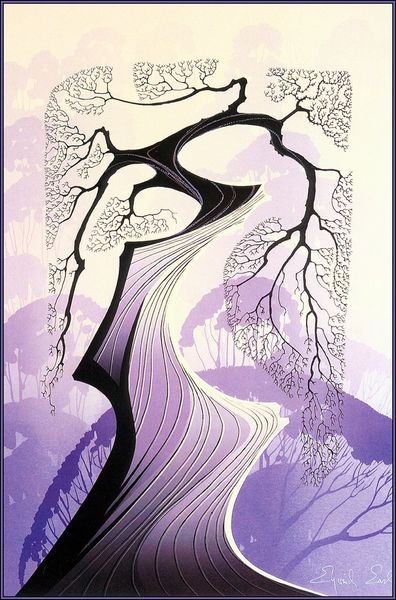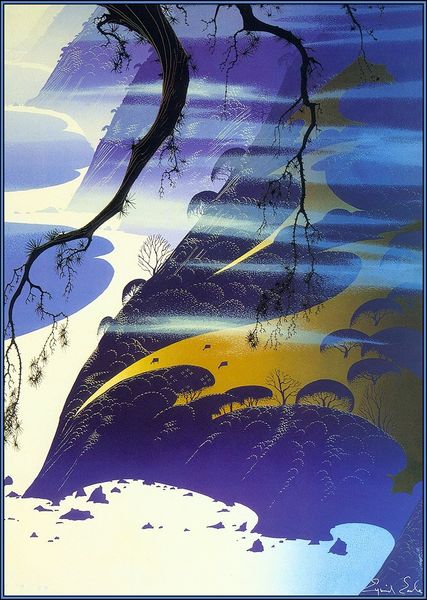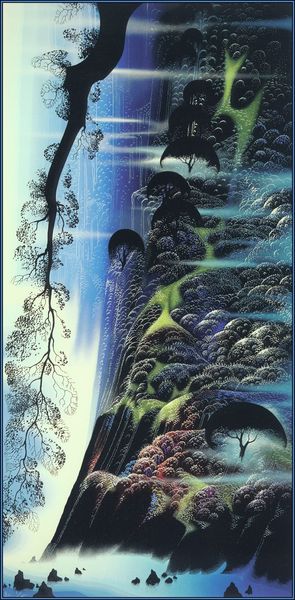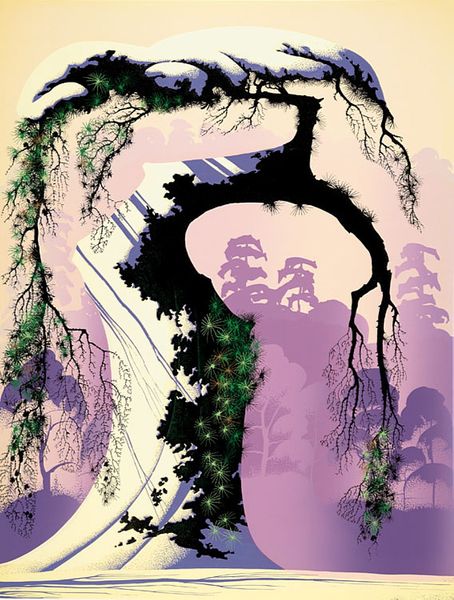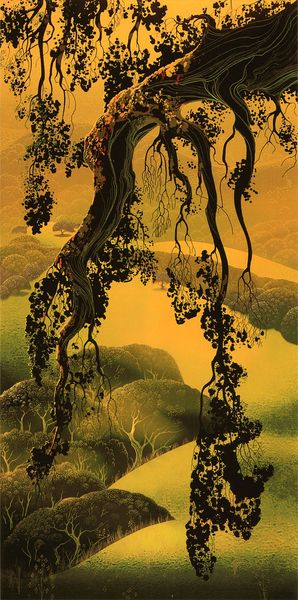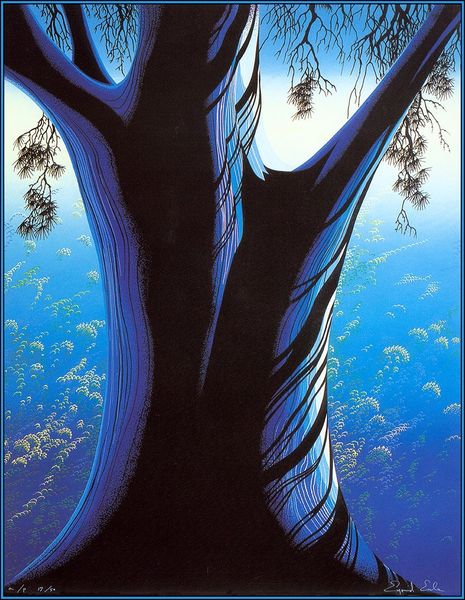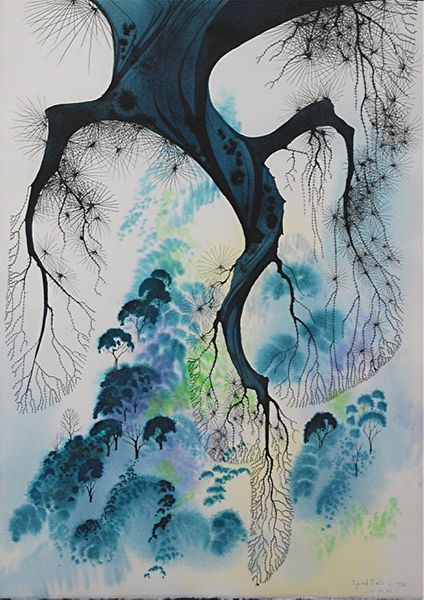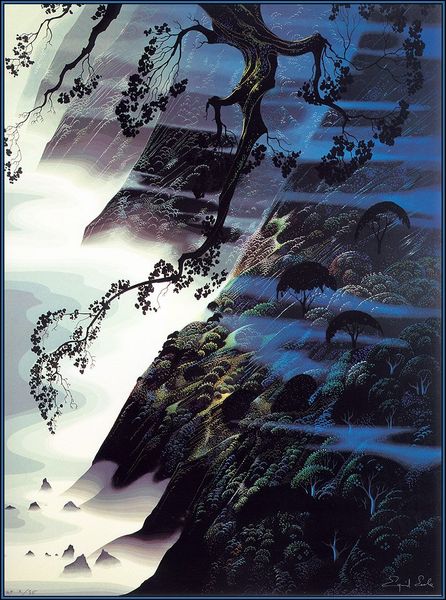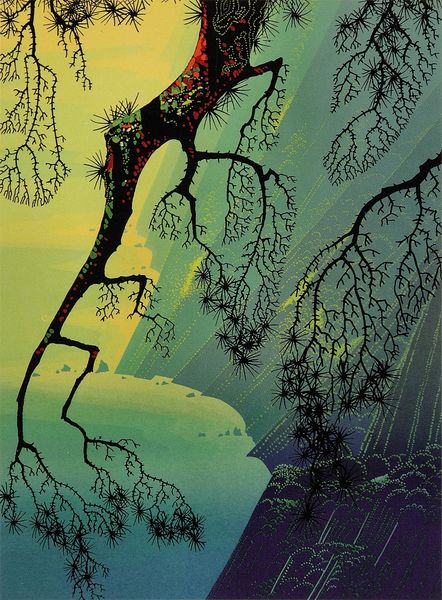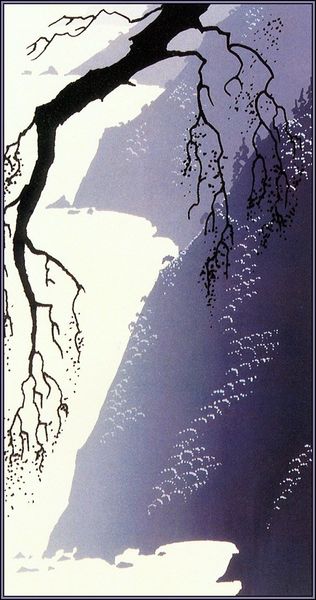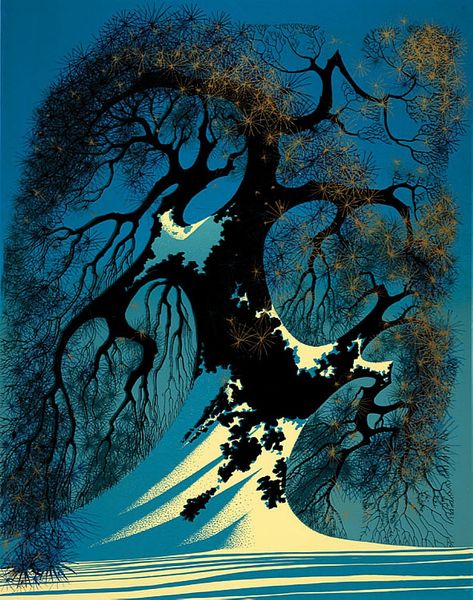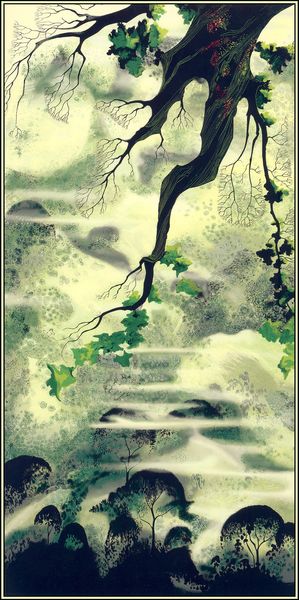
#
vegetal
#
digitally generated fractal art
#
tree
#
garden design
#
allegories
#
enamel pin design
#
mother nature
#
symbol
#
nature colouring
#
fantasy flora
#
fractal art
#
fluid art
#
pattern in nature
Copyright: Eyvind Earle,Fair Use
Curator: So, here we have Eyvind Earle's "Bonsai," created in 1987. My immediate thought is that it is mesmerizing, such an unusual color palette, and very soothing! Editor: Mesmerizing indeed. But I immediately question how much manual labor goes into crafting these fluid, digitally generated fractal patterns he is so well known for? There seems to be almost an inherent tension between the organic forms and these manufactured curves that the artist imposes onto what is in essence an extremely manipulated environment of color and surface texture. Curator: Right! It feels inherently gendered in some way, as it invites discussion on control, constraint, and artificiality that exist not only in Japanese garden culture but perhaps within wider constructs. Editor: Absolutely, thinking about that construction and manufactured experience of looking out on Bonsai, or, better still, how its image circulated commercially as garden and enamel pin design—its existence points to the relationship that garden culture plays in shaping the commercial production, identity and power, where images reinforce societal conventions that we both live within and challenge. Curator: Precisely, which then reinforces a visual legacy through form, colour, and context within consumer culture... I'm keen to question whether the materials he uses, digital fractals in this case, serve a distinct aesthetic purpose, or if he just uses whatever's available to express the underlying subject and his social perspective. Editor: A critical eye reminds us that the choice itself reflects that socio-historical time and reveals so much about who has the resources and agency to participate in cultural production—but Earle makes visible how deeply rooted the means of production are! Curator: Thinking about fractal patterns, one could perceive these to reflect broader social structures with the capacity to infinitely shift and yet constrain... Editor: Perhaps those delicate fractal elements hint at more hopeful possibilities—moments of transcendence where tradition and convention are broken! It may still reinforce conventional practice as part of larger societal power dynamics. Curator: This piece provides ample food for thought, regarding the processes used, in shaping visual culture that reveals and perpetuates structures in modern and post-modern identity narratives. Editor: Indeed—an artist who encourages this dialogue ensures this piece remains vital within ongoing discussions of power, technique, and representation.
Comments
No comments
Be the first to comment and join the conversation on the ultimate creative platform.
